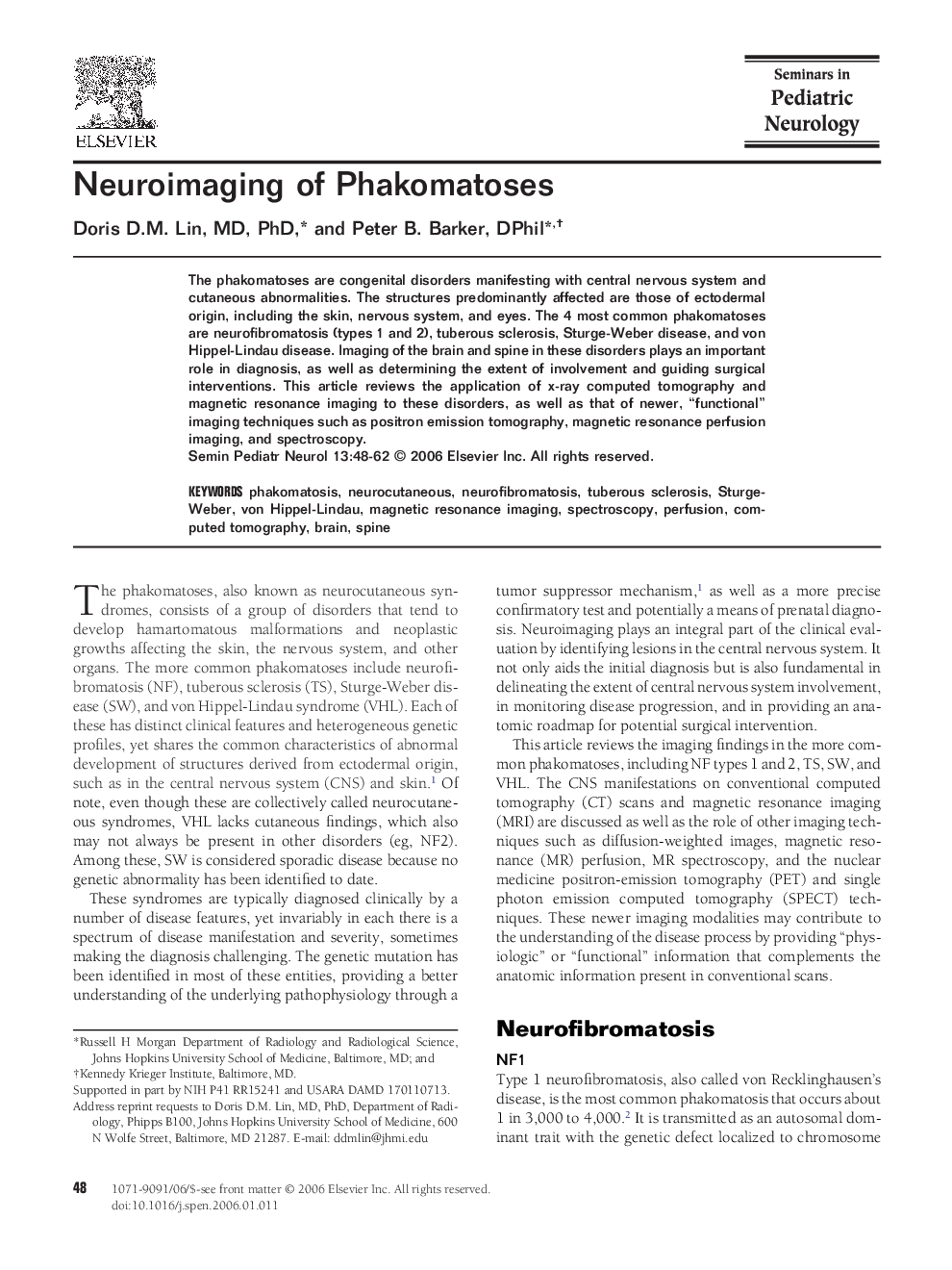| Article ID | Journal | Published Year | Pages | File Type |
|---|---|---|---|---|
| 3091248 | Seminars in Pediatric Neurology | 2006 | 15 Pages |
The phakomatoses are congenital disorders manifesting with central nervous system and cutaneous abnormalities. The structures predominantly affected are those of ectodermal origin, including the skin, nervous system, and eyes. The 4 most common phakomatoses are neurofibromatosis (types 1 and 2), tuberous sclerosis, Sturge-Weber disease, and von Hippel-Lindau disease. Imaging of the brain and spine in these disorders plays an important role in diagnosis, as well as determining the extent of involvement and guiding surgical interventions. This article reviews the application of x-ray computed tomography and magnetic resonance imaging to these disorders, as well as that of newer, “functional” imaging techniques such as positron emission tomography, magnetic resonance perfusion imaging, and spectroscopy.
